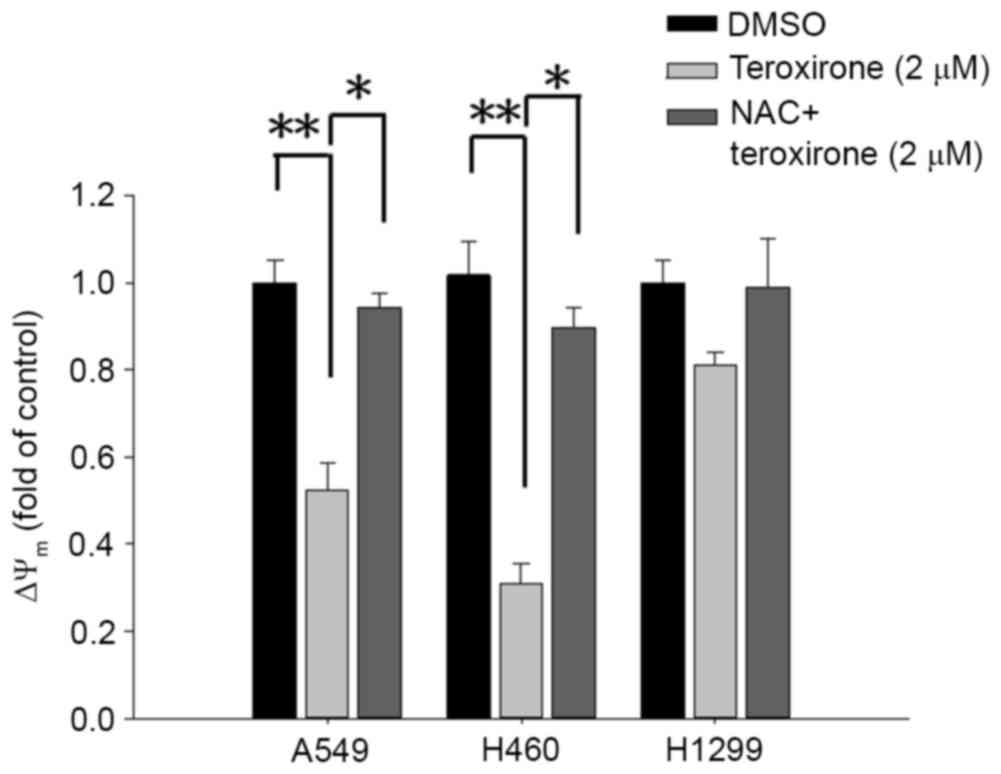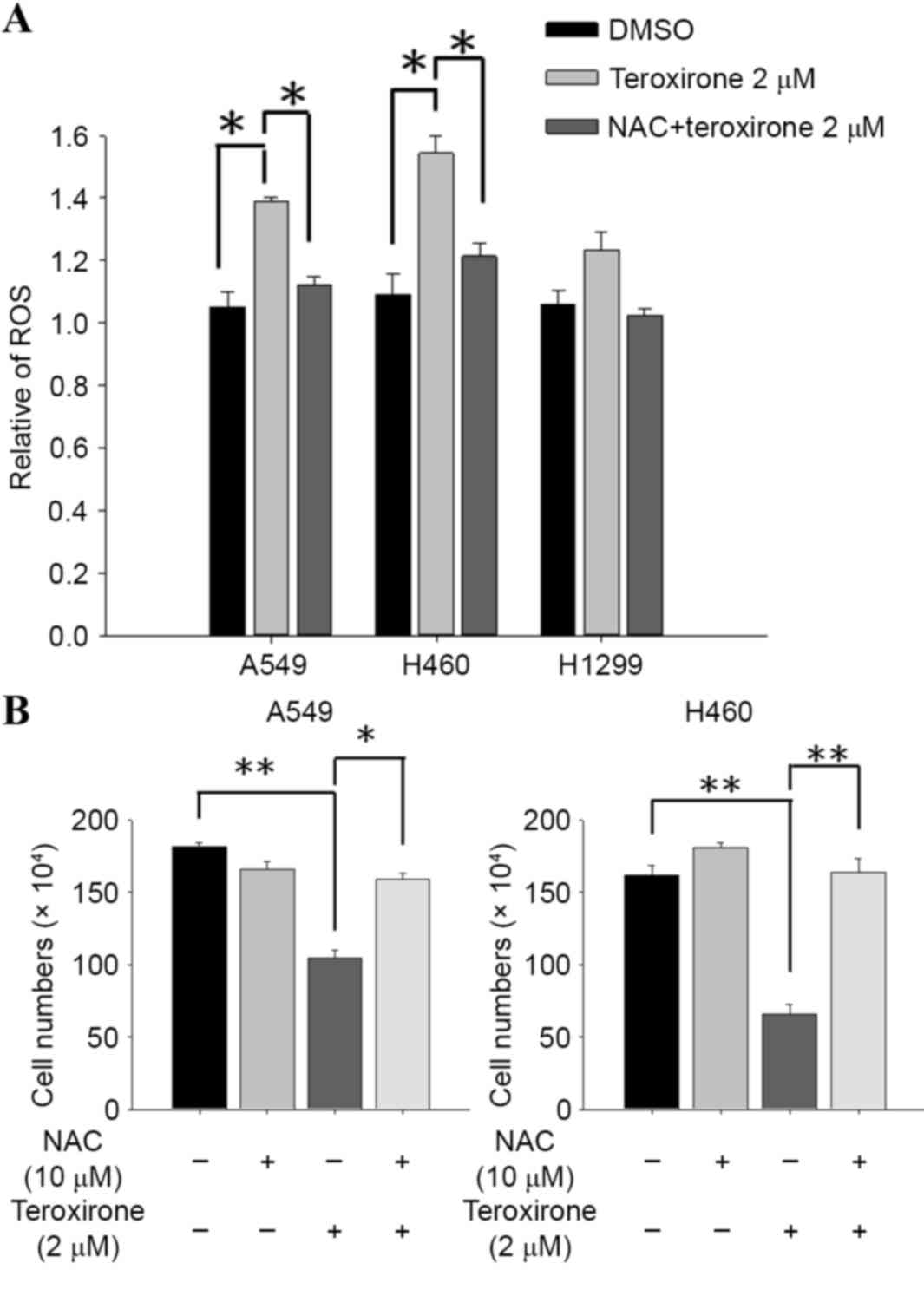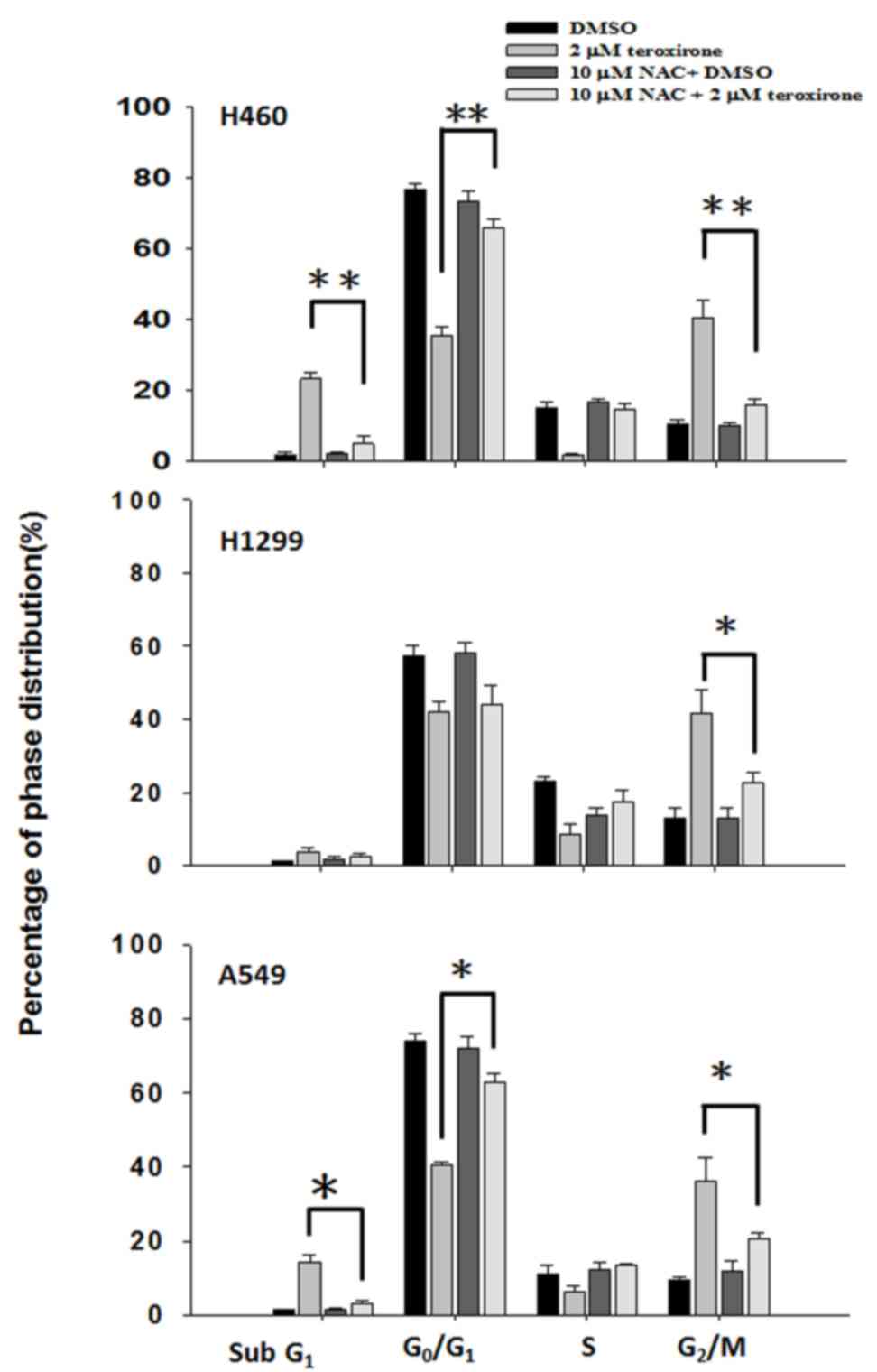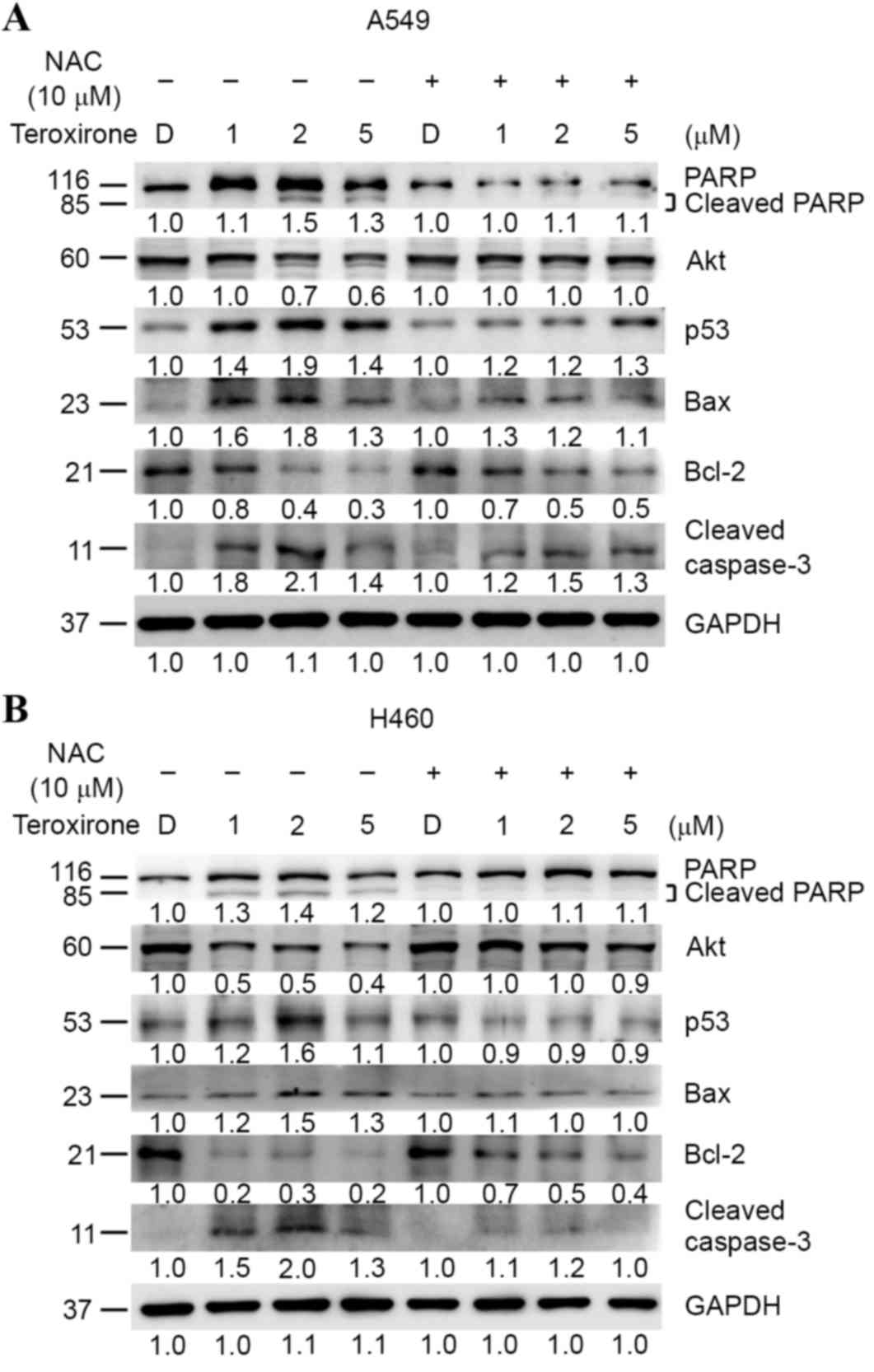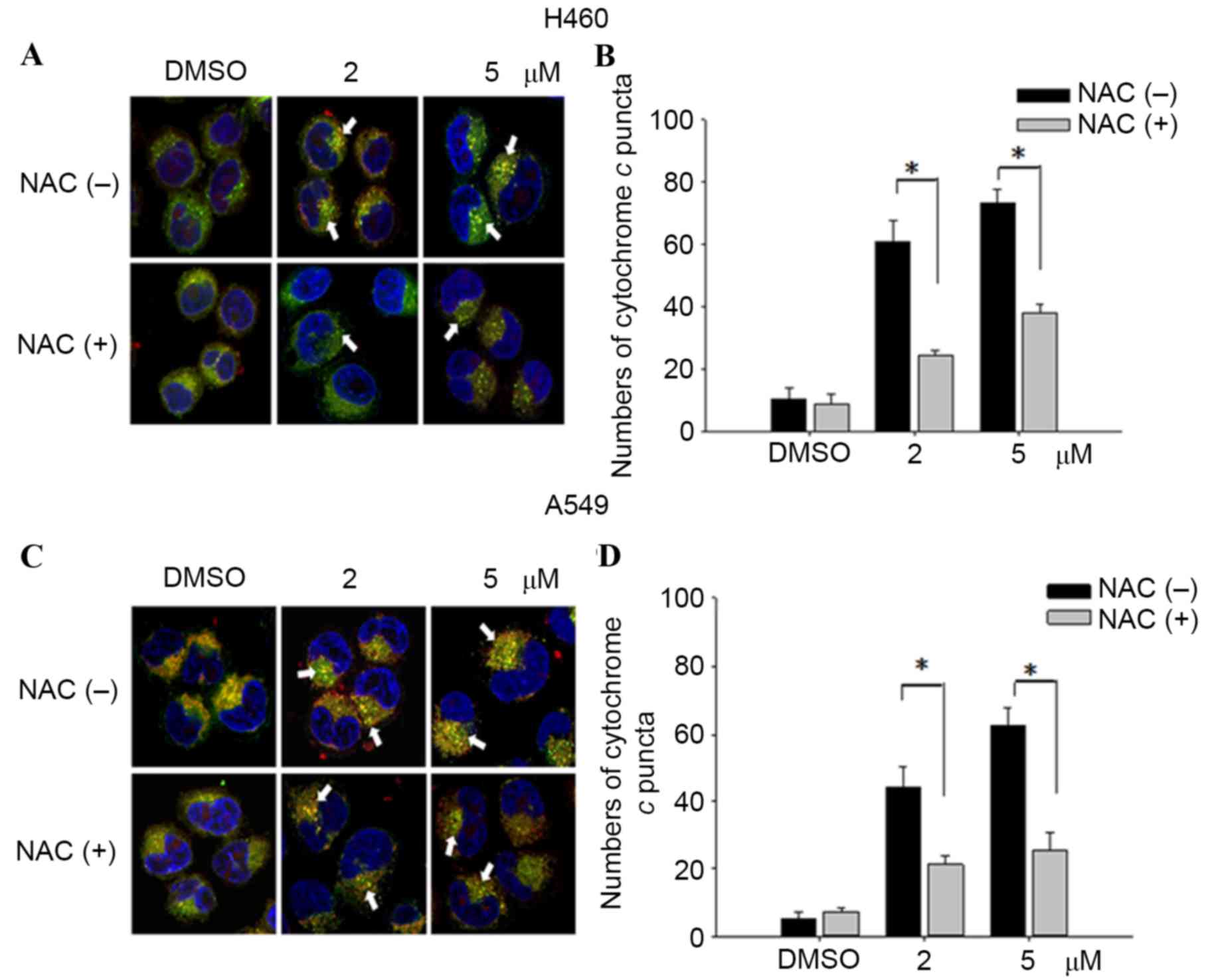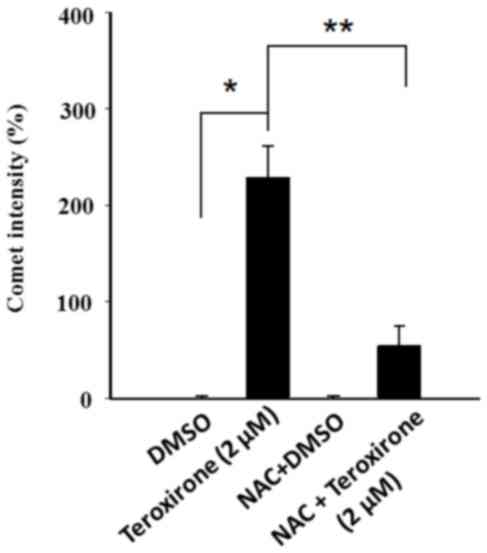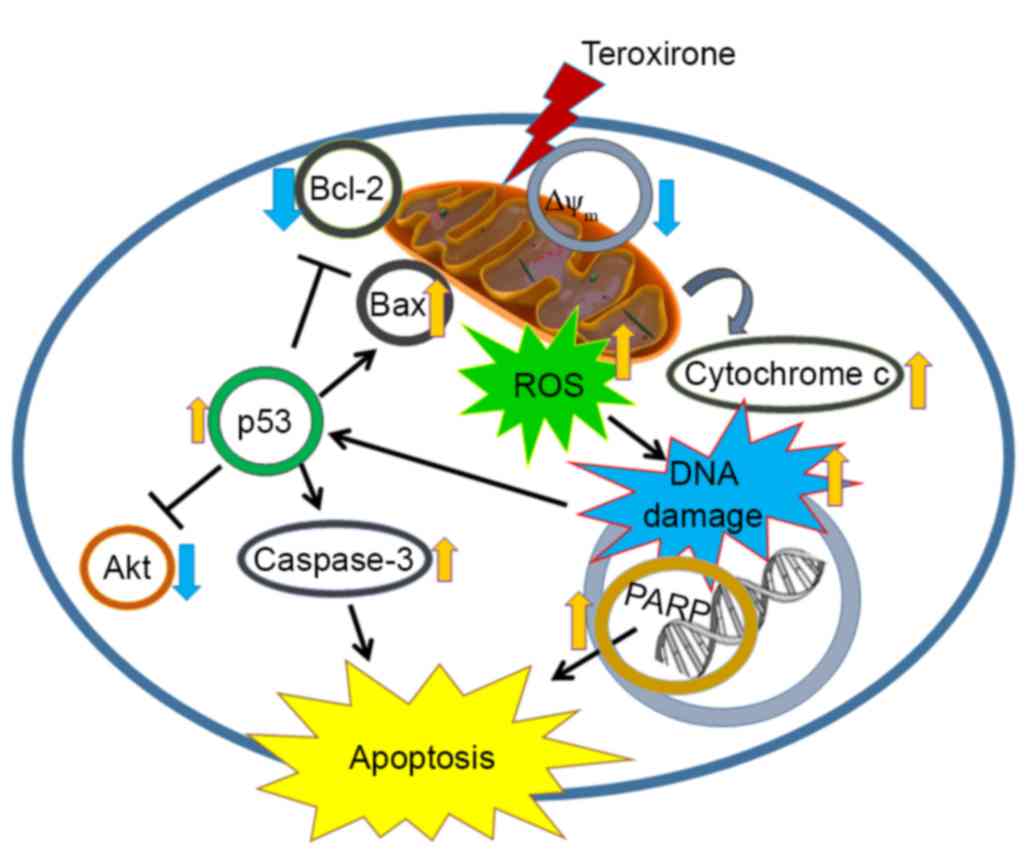|
1
|
Rathos MJ, Khanwalkar H, Joshi K, Manohar
SM and Joshi KS: Potentiation of in vitro and in vivo antitumor
efficacy of doxorubicin by cyclin-dependent kinase inhibitor
P276-00 in human non-small cell lung cancer cells. BMC Cancer.
13:292013. View Article : Google Scholar : PubMed/NCBI
|
|
2
|
Erridge SC, Møller H, Price A and Brewster
D: International comparisons of survival from lung cancer: Pitfalls
and warnings. Nat Clin Pract Oncol. 4:570–577. 2007. View Article : Google Scholar : PubMed/NCBI
|
|
3
|
Charoensinphon N, Qiu P, Dong P, Zheng J,
Ngauv P, Cao Y, Li S, Ho CT and Xiao H: 5-Demethyltangeretin
inhibits human nonsmall cell lung cancer cell growth by inducing
G2/M cell cycle arrest and apoptosis. Mol Nutr Food Res.
57:2103–2111. 2013. View Article : Google Scholar : PubMed/NCBI
|
|
4
|
Spreafico F, Atassi G, Filippeschi S,
Malfiore C, Noseda S and Boschetti D: A characterization of the
activity of alpha-1,3,5-triglycidyl-s-triazinetrione, a novel
antineoplastic compound. Cancer Chemother Pharmacol. 5:103–108.
1980. View Article : Google Scholar : PubMed/NCBI
|
|
5
|
Dombernowsky P, Lund B and Hansen HH:
Phase-I study of alpha-1,3,5-triglycidyl-s-triazinetrione (NSC
296934). Cancer Chemother Pharmacol. 11:59–61. 1983. View Article : Google Scholar : PubMed/NCBI
|
|
6
|
Wang JP, Lin KH, Liu CY, Yu YC, Wu PT,
Chiu CC, Su CL, Chen KM and Fang K: Teroxirone inhibited growth of
human non-small cell lung cancer cells by activating p53. Toxicol
Appl Pharmacol. 273:110–120. 2013. View Article : Google Scholar : PubMed/NCBI
|
|
7
|
Okon IS, Coughlan KA, Zhang M, Wang Q and
Zou MH: Gefitinib-mediated reactive oxygen species (ROS) instigates
mitochondrial dysfunction and drug resistance in lung cancer cells.
J Biol Chem. 290:9101–9110. 2015. View Article : Google Scholar : PubMed/NCBI
|
|
8
|
Brodská B and Holoubek A: Generation of
reactive oxygen species during apoptosis induced by DNA-damaging
agents and/or histone deacetylase inhibitors. Oxid Med Cell Longev.
2011:2535292011. View Article : Google Scholar : PubMed/NCBI
|
|
9
|
Simon HU, Haj-Yehia A and Levi-Schaffer F:
Role of reactive oxygen species (ROS) in apoptosis induction.
Apoptosis. 5:415–418. 2000. View Article : Google Scholar : PubMed/NCBI
|
|
10
|
Fulda S and Debatin KM: Extrinsic versus
intrinsic apoptosis pathways in anticancer chemotherapy. Oncogene.
25:4798–4811. 2006. View Article : Google Scholar : PubMed/NCBI
|
|
11
|
Ricci JE, Muñoz-Pinedo C, Fitzgerald P,
Bailly-Maitre B, Perkins GA, Yadava N, Scheffler IE, Ellisman MH
and Green DR: Disruption of mitochondrial function during apoptosis
is mediated by caspase cleavage of the p75 subunit of complex I of
the electron transport chain. Cell. 117:773–786. 2004. View Article : Google Scholar : PubMed/NCBI
|
|
12
|
Herrera B, Alvarez AM, Sánchez A,
Fernández M, Roncero C, Benito M and Fabregat I: Reactive oxygen
species (ROS) mediates the mitochondrial-dependent apoptosis
induced by transforming growth factor (beta) in fetal hepatocytes.
FASEB J. 15:741–751. 2001. View Article : Google Scholar : PubMed/NCBI
|
|
13
|
Xu H, Li X, Ding W, Zeng X, Kong H, Wang H
and Xie W: Deguelin induces the apoptosis of lung cancer cells
through regulating a ROS driven Akt pathway. Cancer Cell Int.
15:252015. View Article : Google Scholar : PubMed/NCBI
|
|
14
|
Cantley LC: The phosphoinositide 3-kinase
pathway. Science. 296:1655–1657. 2002. View Article : Google Scholar : PubMed/NCBI
|
|
15
|
Rousalova I, Banerjee S, Sangwan V,
Evenson K, McCauley JA, Kratzke R, Vickers SM, Saluja A and D'Cunha
J: Minnelide: A novel therapeutic that promotes apoptosis in
non-small cell lung carcinoma in vivo. PLoS One. 8:e774112013.
View Article : Google Scholar : PubMed/NCBI
|
|
16
|
Reno TA, Kim JY and Raz DJ: Triptolide
inhibits lung cancer cell migration, invasion and metastasis. Ann
Thorac Surg. 100:1817–1825. 2015. View Article : Google Scholar : PubMed/NCBI
|
|
17
|
Vispé S, DeVries L, Créancier L, Besse J,
Bréand S, Hobson DJ, Svejstrup JQ, Annereau JP, Cussac D, Dumontet
C, et al: Triptolide is an inhibitor of RNA polymerase I and
II-dependent transcription leading predominantly to down-regulation
of short-lived mRNA. Mol Cancer Ther. 8:2780–2790. 2009. View Article : Google Scholar : PubMed/NCBI
|
|
18
|
Sang H, Zhang L and Li J:
Anti-benzopyrene-7,8-diol-9,10-epoxide induces apoptosis via
mitochondrial pathway in human bronchiolar epithelium cells
independent of the mitochondria permeability transition pore. Food
Chem Toxicol. 50:2417–2423. 2012. View Article : Google Scholar : PubMed/NCBI
|




